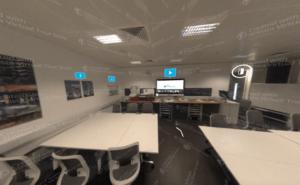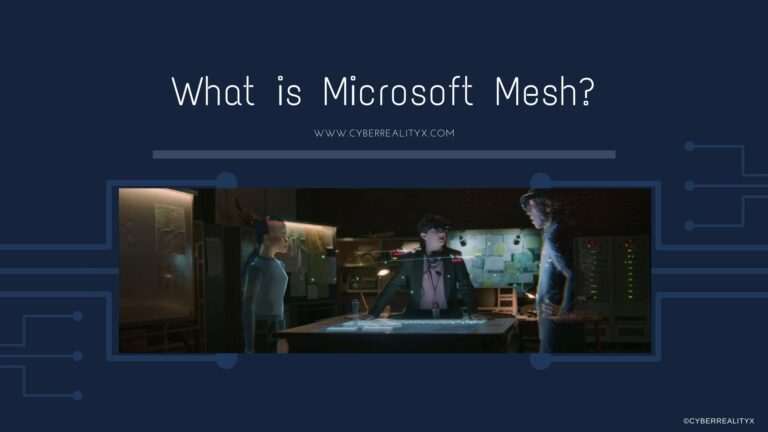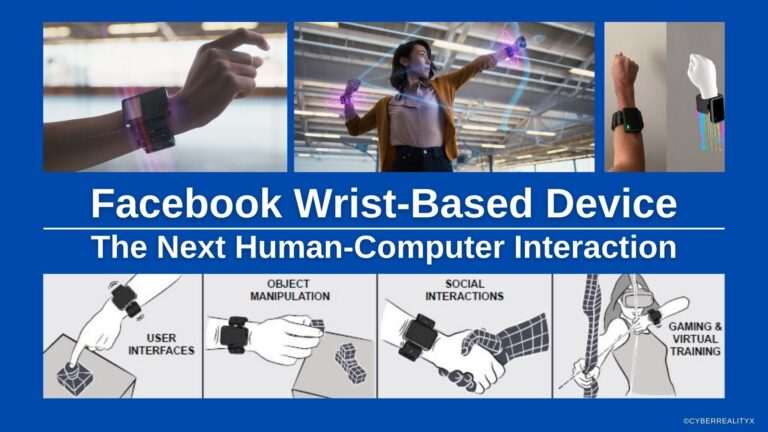Virtual Tours & VR in Construction
| This project delves into the significant impact that Virtual Tours and VR technology can have on the construction industry. Through a collection of projects and case studies, we explore how these technologies revolutionise various aspects of the construction process, particularly in improving safety on construction sites from the initial planning stages to the final stages of construction.
In the modern day, the construction industry faces numerous challenges, with health and safety being one of the most pressing. This project illustrates how the correct use of Virtual Tours can minimise the risk of hazards for all parties involved. In 2017/18, over a quarter of all workplace fatalities occurred in the construction industry (steantycip.com, 2019). Whether developing new sites or modifying existing ones, architects can use Virtual Tours and VR to analyse hazards, identify and configure escape routes, and spot issues or mishaps efficiently and promptly through a wider viewpoint (steantycip.com, 2019). |
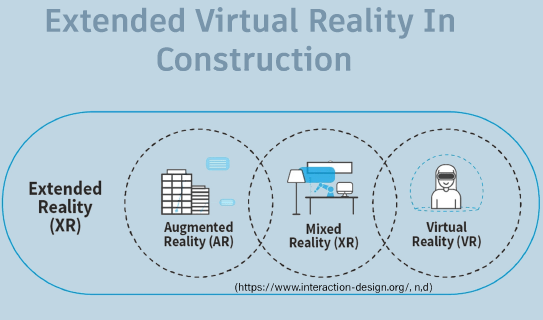 |
How XR in construction aids Sustainability
| To help the construction industry deal with problems like carbon emissions and long-term sustainability, DigitalAuts suggested using virtual reality (VR) technology. VR lets workers practice real-life situations in a virtual, safe environment. Because VR is digital and makes you feel like you’re actually there, it has many benefits that can help different industries move towards producing zero net carbon emissions. Another good thing about VR is that it can introduce younger people to construction in a safe way, helping them learn new skills and explore career options They can practice and learn without any real-world risks in VR. (igitalnauts.co.uk, n.d ) |  |
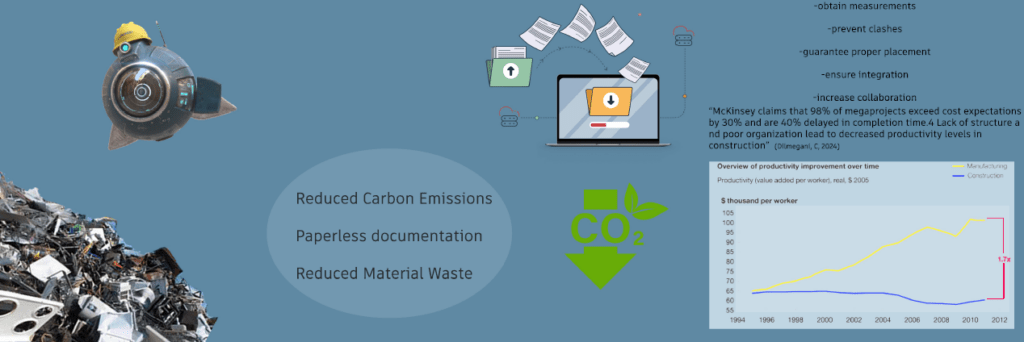
Virtual Tours & VR – High-level diagram
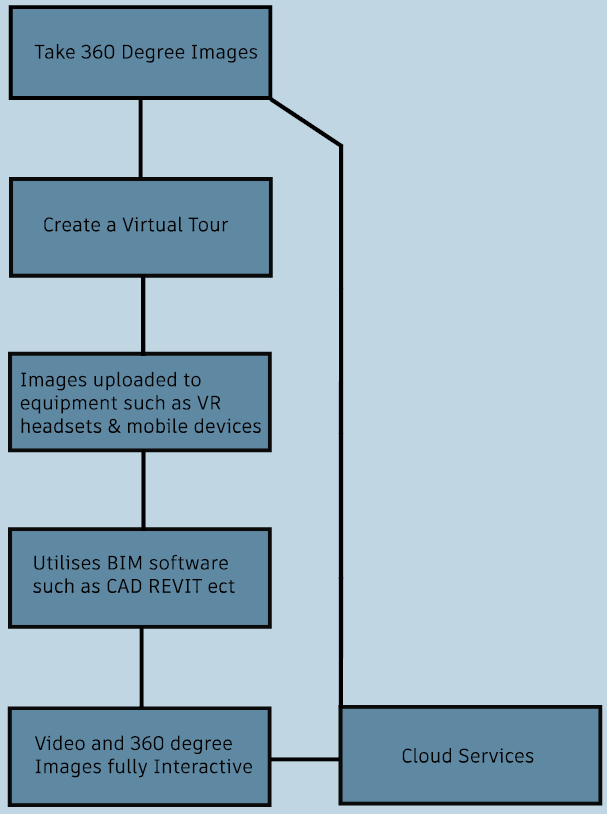
Virtual Tours & VR – Low-level diagram
360 Degree Camera
Once hotspots have been placed on the images the panoramas are ready to be used for training and awareness to aid health and safety on construction sites without having to enter the site
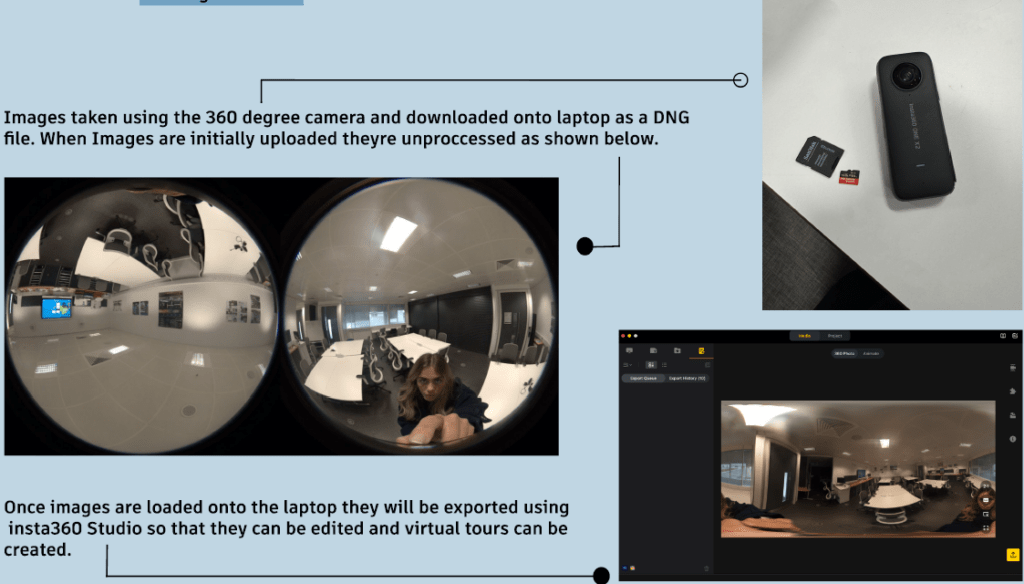

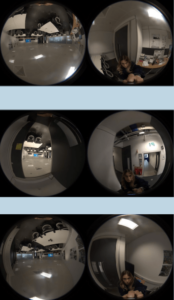
Raw images |

Without hotspot
With hotspot |
During this project, we did not get the chance to visit a real construction site to complete the virtual tour images, so this image is an example of how a virtual tour would work on a construction site and how this can aid safety and awareness of a project without entering the site.
Laser Scanner
| Firstly I scanned the room in question to determine the size and boarders in the room, to do this the Leica laser scanner was used. The laser scanner was placed in different areas of the room to ensure the full room was captured the collection of 3D coordinates is stored in the cloud as E57 files and ready to be uploaded to Matterport. |  |
| Once uploaded to Matterport the dimensions of the room can be determined and a full ‘dollhouse’ image can be viewed | 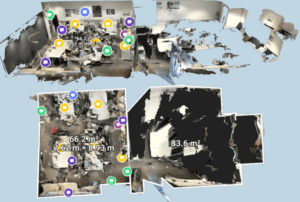 |
| Once laser scanner files have been uploaded to Matterport tags can be added as instructions/ warnings for potential obstacles on site |  |
| Alongside this accurate measurements can be added to the virtual tour allowing for a better understanding of the space in the virtual world. The design team can also use this information to estimate the placing of objects. | 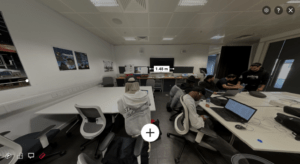 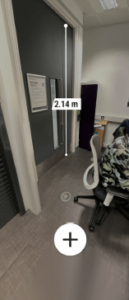 |
| Users can navigate around the virtual space gauging the size and environment around them. This process can be done online or through a VR headset. In virtual reality, they can also take additional measurements. | 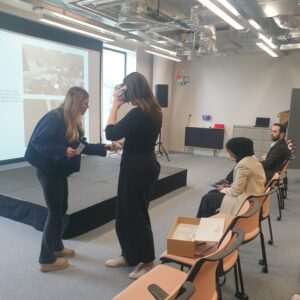 |
Pros
Cons
|
 |
| Although in this case, it has not been possible to access a construction site I have included a Matterport image here which is used in a construction site for reference. As shown the Dollhouse image can give an idea of what potential hazards may be in the space and the workers can explore this in more depth through the virtual tour inside the dollhouse. | 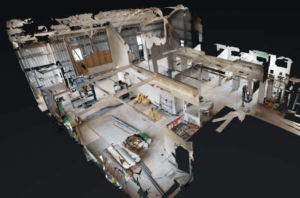 |
Summary
Overall, the built environment can benefit from the use of virtual tours in construction they can manage health and safety which is one of the largest problems within the built environment. In the future, it is likely that Virtual tours using VR will become more common with vaster knowledge and more affordable options available. As explained in the portfolio these tours can help with learning how to operate machinery, understanding emergency procedures, and recognizing site-specific dangers. Some challenges that occurred during this project were: the ability to access a construction site and limited equipment. However, these problems were overcome by showing how the project would work in a different environment and sharing the equipment with classmates. Aside from the virtual tour being used in collaboration with the Meta Quest VR headset, they can also be used with more affordable headsets such as Cardboard VR headsets with a mobile device. Moreover, the tours can even be used directly from a computer or laptop making them far more attainable than other options. Overall, VR virtual tours can create a safer construction environment by creating hazard recognition, providing training, improving emergency responses, and creating better planning.
References
- Dilmegani, C, 2024. XR/AR in Construction: Top 5 Use Cases in 2024
- Elstner, M, 2020. Use cases of Extended Reality in the construction industry
- What is Extended Reality (XR)?
- Exploring the Benefits of Virtual Reality Adoption for Successful Construction in a Developing Economy
- Benefits of Virtual Reality in Construction Safety Training
- Exploring the Future of Virtual Reality in the Construction Industry
- Zero waste
